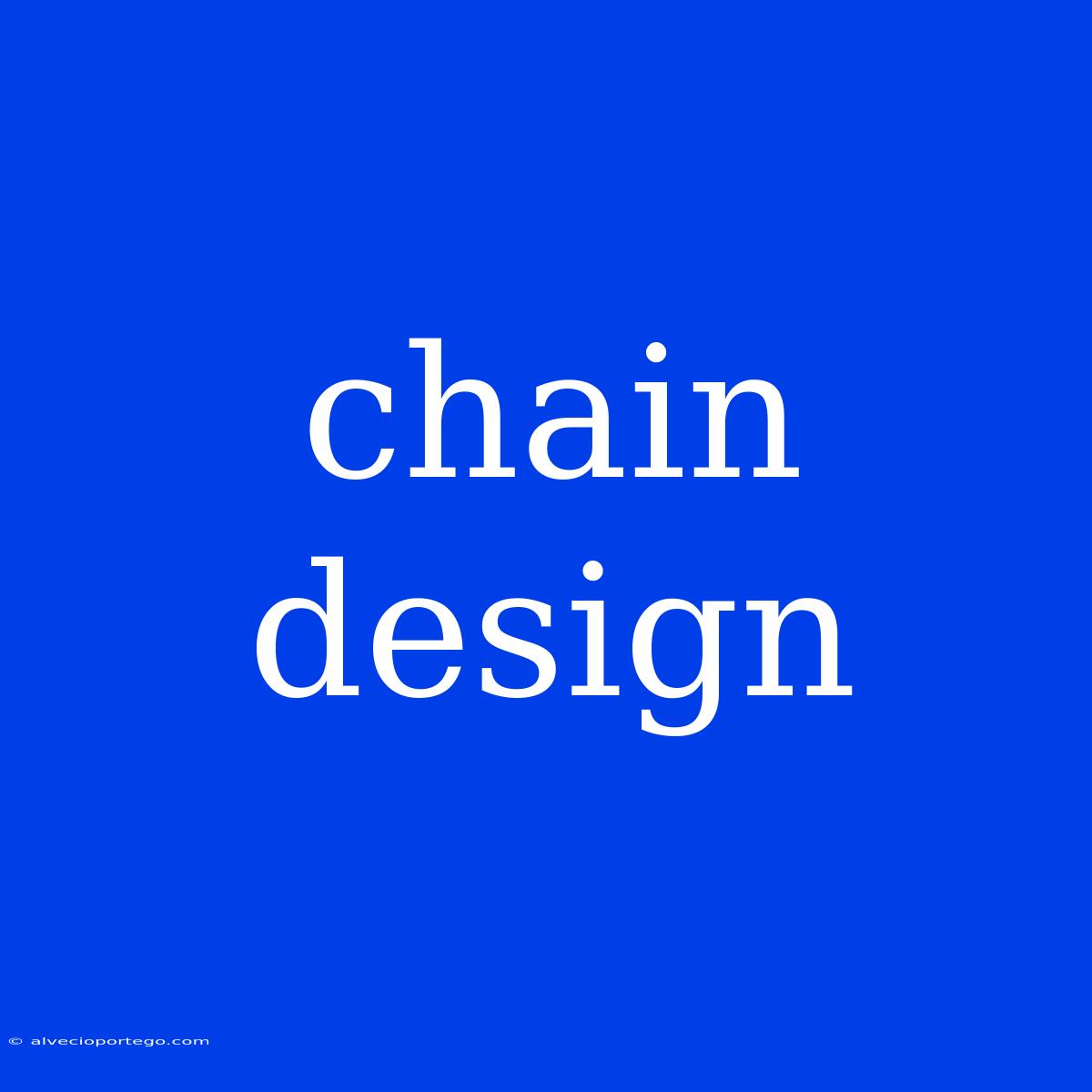Chain Design: A Comprehensive Guide
Chains are ubiquitous in our lives, from the simple chain on a bicycle to the complex chain used in heavy machinery. But have you ever stopped to consider the design principles that go into creating these seemingly simple, yet crucial components?
Chain design is a fascinating blend of engineering, materials science, and aesthetic considerations. It involves a complex interplay of factors that determine its strength, durability, and functionality.
Understanding the Basics
A chain is essentially a series of interconnected links, typically made of metal. These links are joined together through a specific configuration, creating a continuous loop that can transmit force and movement. The design of a chain is determined by its intended application and the specific requirements of the task.
Key Elements of Chain Design
Several factors are critical to chain design:
1. Material: Chain materials vary significantly depending on the application. Common materials include:
- Steel: The most common chain material due to its strength, durability, and cost-effectiveness.
- Stainless Steel: Offers increased corrosion resistance, suitable for harsh environments.
- Brass: Offers superior wear resistance but is weaker than steel.
- Aluminum: Lightweight and corrosion-resistant, suitable for low-load applications.
- Plastic: Used for non-load-bearing applications, often in toys and household items.
2. Link Configuration: The shape and arrangement of links determine the chain's strength, flexibility, and resistance to wear. Common link types include:
- Roller Chain: The most common type, featuring rollers that reduce friction and wear.
- Sprocket Chain: Designed for use with sprockets, often used in bicycles.
- Conveyor Chain: Large, heavy-duty chains used for moving materials in factories and warehouses.
3. Pitch: The distance between the centers of two adjacent links, measured in inches or millimeters. Pitch determines the chain's compatibility with sprockets or other components.
4. Strength: Chain strength is determined by the material, link configuration, and manufacturing process. It's measured in terms of tensile strength, the maximum load the chain can withstand before breaking.
5. Wear Resistance: Chain wear is a major factor in its lifespan. Proper lubrication, material selection, and link design contribute to wear resistance.
6. Flexibility: The flexibility of a chain is important for its ease of movement and ability to adapt to changes in direction.
7. Noise: Chain noise can be a concern in some applications. Design considerations like link geometry and lubrication can help minimize noise.
Chain Design Considerations for Different Applications
1. Bicycles: Bicycle chains require high tensile strength, smooth operation, and durability to handle the forces of pedaling. They are typically designed with specialized roller chains optimized for specific gear ratios and riding styles.
2. Motorcycles: Motorcycle chains are subject to high loads and harsh conditions. They are made from high-strength steel and feature heavier duty construction.
3. Automotive: Automotive chains are used in timing mechanisms, oil pumps, and other critical components. They are typically made from specialized high-strength steel to ensure reliability.
4. Industrial Applications: Industrial chains are used for heavy-duty applications like conveyors, hoists, and cranes. They are built with robust link configurations and high wear resistance.
5. Jewelry: Chain design in jewelry focuses on aesthetics and durability, with intricate designs and use of precious metals.
Conclusion
Chain design is a complex and fascinating field with a wide range of applications. Understanding the key elements and design considerations can help you appreciate the engineering ingenuity behind these seemingly simple yet vital components.

